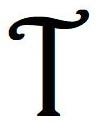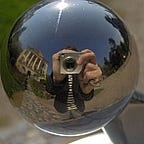Why OpenSea?
Lazy Minting, No Gas Fees, Unlockable Contents
 The first step for publishing an NFT-artwork is: to find a place to showcase them. And the journey of trial&error begins. Because there are no how-to’s (or better: there are too many how-to’s to orient within this chaos).
The first step for publishing an NFT-artwork is: to find a place to showcase them. And the journey of trial&error begins. Because there are no how-to’s (or better: there are too many how-to’s to orient within this chaos).
My first platform was Rarible (just because everybody told about it [take care on things everybody is talking about]). I already had prepared several Digital Artworks, I created my profile, I uploaded my artwork, and then… rude awakening. Called “gas fees”. Welcome to the CryptoCapitalism. Gas Fees are payments for specific computational effort for specific calculations of transactions in Ethereum (initial minting, listing, transfer, speeding up etc.).
And they are expensive. Especially if you just begin your NTF journey. Here are some numbers.
Paying these fees doesn’t guarantee you any ROI. And you have to pay gas for almost every (trans)action with your NFT.
So shocking revelations may follow:
Using https://fees.wtf/ you can see, how much gas fees have you paid (if you want to see it at all).
Additionally (or, forward-looking: predominantly) every transaction, every “gas” in Bitcoin or Ethereum means horrendous environmental costs:
To be honest, for me all that was almost the reason to stop exploring the NFT scene. Until I’ve got good advice:
Lazy Minting.
This is supported by several platforms, and hard-boiled NFT-artists are sometimes opposite to this (they jump into the abyss by learning to fly, instead). “Lazy minting” means showcasing your NFT-art passively, waiting for others discovering you. Of course, you can undertake the marketing and distribution of your artworks. But until somebody will found you, your works will remain undiscovered.
OpenSea
OpenSea is one such platform. And diving deeper into it I decided in favor of this system. It provides even more interesting features:
- No gas fees.
You have to pay once for the first minting in ETH, and the first bid in “wrapped ETH” (WETH), but after that, you can upload artwork after artwork without any gas fees. It does mean, there are no real limits, besides your imagination (don’t spam, though). - Content editing.
Possibility to edit and format description of your artworks. You even have more space for a comprehensive textual explanation — or by providing a link to your external blog or website about this artwork. - Galleries
You can open several galleries (each of them has to be approved by OpenSea). Useful if you create in various styles and about various topics — and have pretty different target groups, who might be distracted by your other themes. - Unlockable Contents
This feature is especially interesting for me — it even allows fully new ways of storytelling (I’ll write later more about it). NFT democratizes art. Everybody can view the artwork, published and crypto-registered with NTF-distribution. But only collectors possess it — and support the author for further creativity. By purchasing an artwork within OpenSea collectors get “unlocked contents” link to further materials the artist provides only for new artwork owner. Exlusive data. Sounds like another marketing stunt, but can be used for fully new narratives (later more about it).
This, and many other aspects were vital for my choice of NTF platform. Here is my profile btw.:
I’m experimenting with Artificial Intelligence, making Artificial Reality — a new, unknown world, rich on music, stories, visual treasures. See you there!
